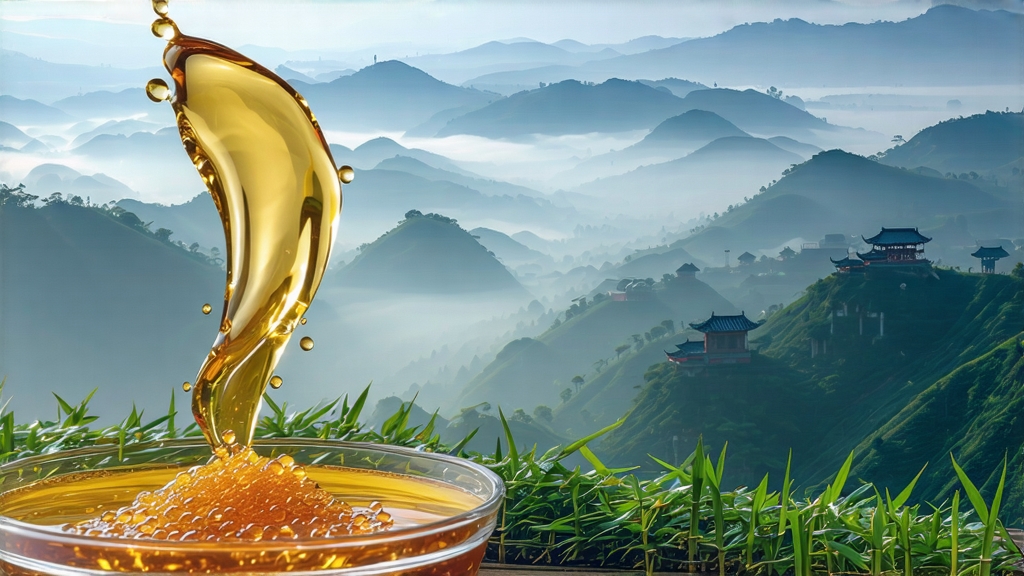
Tucked into the creased limestone hills of Guangxi Province, half a day’s drive west of the Pearl River delta, lies the small river port of Wuzhou. For three centuries its wharves echoed with the dialects of Yunnan muleteers, Cantonese tea brokers, and Malay tin miners, all converging on one cargo: Liu Bao, a dark, almost black tea whose mellow sweetness once cooled the furnaces of Southeast Asia’s tin mines and accompanied the diaspora of Cantonese coolies to every corner of the Nanyang. Today, while Pu-erh commands auction headlines and Fu bricks star in museum vitrines, Liu Bao remains the quiet custodian of an older, subtler story—one of humid caves, bamboo baskets, and the patient alchemy of time.
Historical Footprints
The first written record appears in 1810, in the county gazetteer of Cangwu: “Tea of Liu Bao village, pressed into baskets, travels down the Xun River to Guangzhou, thence to ocean junks.” By the 1850s, British customs logs list “Wuchow Dark Tea” alongside opium and rice as principal exports. The tea rode the same monsoon currents that carried indentured laborers to Kuala Lumpur and Penang; miners brewed it in kerosene tins to settle dust-clogged lungs and sweeten the metallic aftertaste of tin-ore. In return, the tropical humidity of the Malay Peninsula taught the tea new tricks: baskets stowed in ship holds arrived darker, smoother, touched with a faint camphor note that would later inspire producers to recreate those conditions back home.
Micro-Terroirs and Leaf Styles
Liu Bao is not a single recipe but a family of styles shaped by three variables: mountain slope, leaf grade, and warehouse microclimate. The highest gardens sit between 300–600 m on the northern flanks of the Yunkai Range, where morning fog filters through karst fissures, lowering UV exposure and thickening leaf cuticles. Here, the indigenous Da Ye cultivar—botanical cousin to Yunnan’s Da Ye Zhong—develops leaves the size of a farmer’s palm, rich in methyl salicylate, the compound behind Liu Bao’s signature wintergreen nuance.
Leaf grades are coded by basket size: “S” (small, 250 g) contains only bud-and-first-leaf; “M” (medium, 1 kg) adds the second leaf; “L” (large, 5–50 kg) is a rustic mix of three to four leaves and a well-developed stem. Connoisseurs prize “S” for its perfume, but miners swore by “L,” claiming the stems replenished electrolytes lost to sweat.
Crafting the Darkness
Unlike the microbially driven post-fermentation of Pu-erh, Liu Bao relies on a controlled “wet pile” phase that predates similar techniques in Yunnan by at least a century. The process begins in late May, when humid air arrives on the back of the South China Sea monsoon. Fresh leaves are pan-fired at 280 °C for eight minutes—just long enough to kill green enzymes while preserving surface microbes. After a brief kneading, the leaf is piled 70 cm deep on bamboo mats and misted with mineral-rich cave water. Internal temperature is allowed to spike to 55 °C for 36 hours; master turners gauge readiness by aroma alone: a shift from cut-grass to dried jujube signals the moment to break the pile.
Next comes the unique “basket steam” step. Leaves are packed into plaited bamboo baskets lined with wild banana leaf, then inverted over a cauldron of boiling artesian water for 90 seconds. The flash steam softens fibers without leaching polyphenols, enabling tight compression that still breathes. Finally, the baskets are moved into limestone caves—abandoned quarries whose year-round 85 % humidity and 22 °C temperature host a microbial consortium dominated by Aspergillus niger and Blastobotrys adeninivorans. Here the tea sleeps for a minimum of three years, emerging with a ruby-black sheen and the scent of camphor bark.
The Art of Brewing
Liu Bao forgives the novice but rewards the attentive. Begin by rinsing 5 g of leaf in a 150 ml Yixing pot using 95 °C water for five seconds; discard the rinse to awaken dormant spores. The first proper infusion, 15 seconds long, yields a liqueur